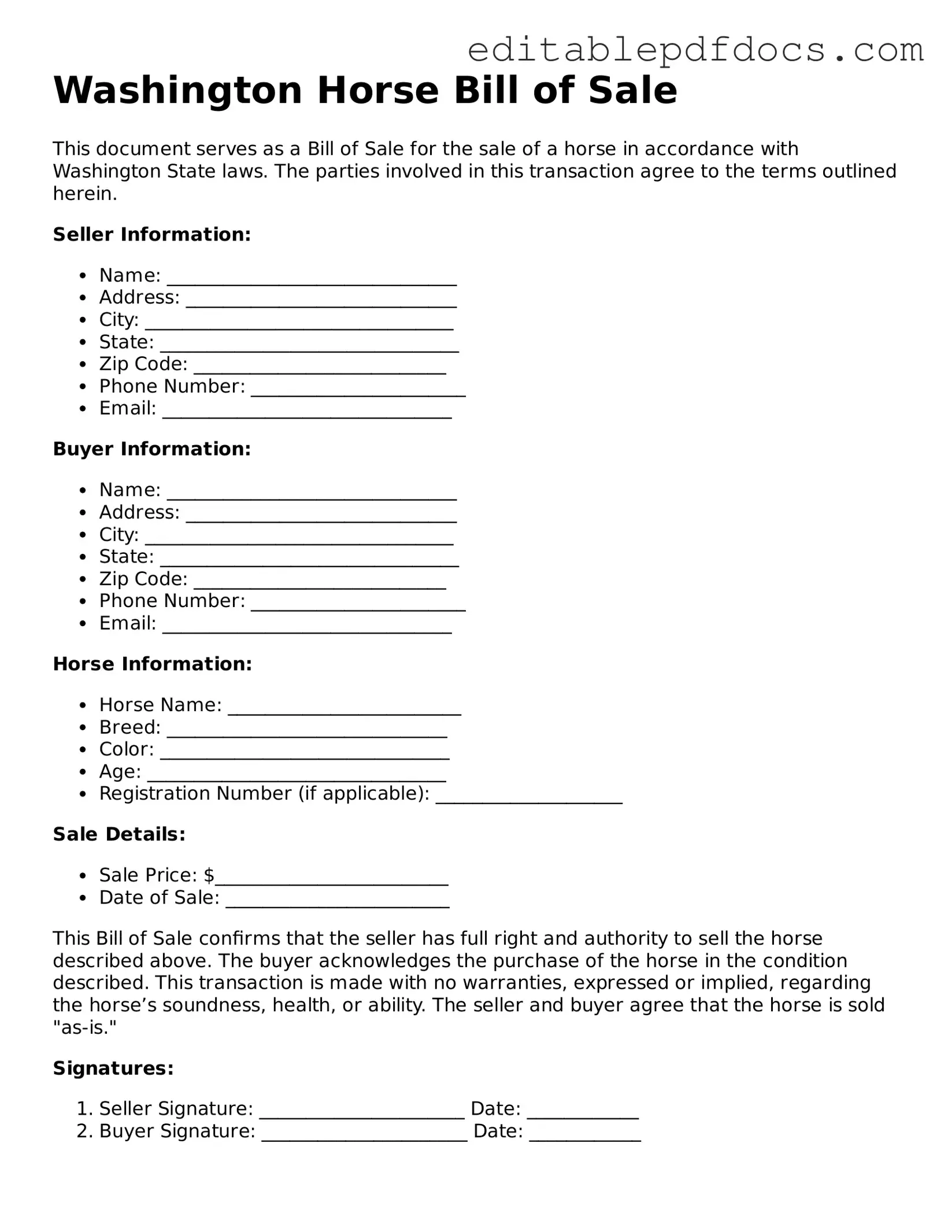Horse Bill of Sale Document for Washington
The Washington Horse Bill of Sale form is a legal document that facilitates the transfer of ownership of a horse from one party to another in the state of Washington. This form outlines essential details such as the buyer's and seller's information, horse identification, and the sale price. Properly completing this form ensures that both parties have a clear record of the transaction and protects their rights.
To initiate the process of transferring horse ownership, fill out the form by clicking the button below.
Open Editor Now
